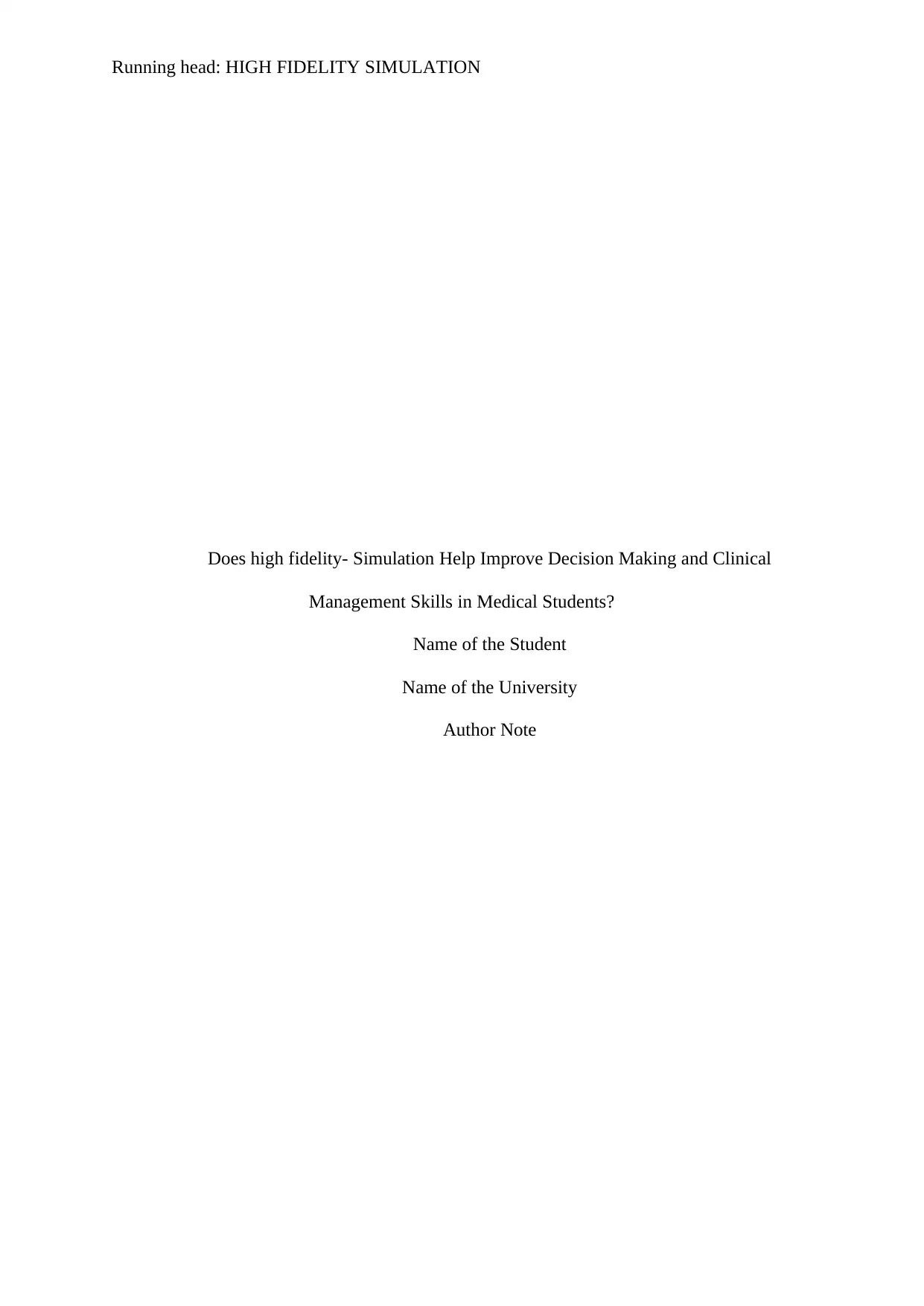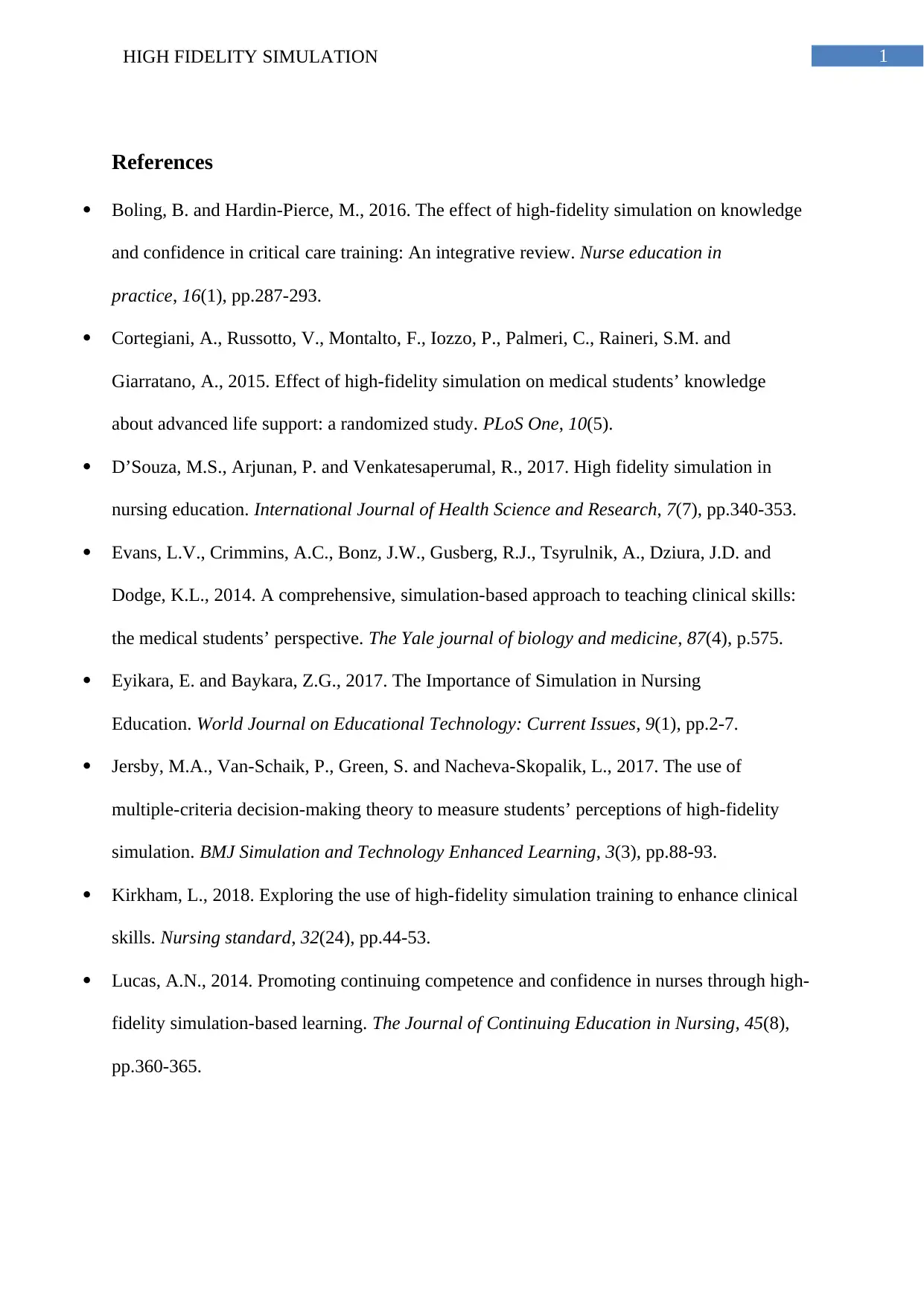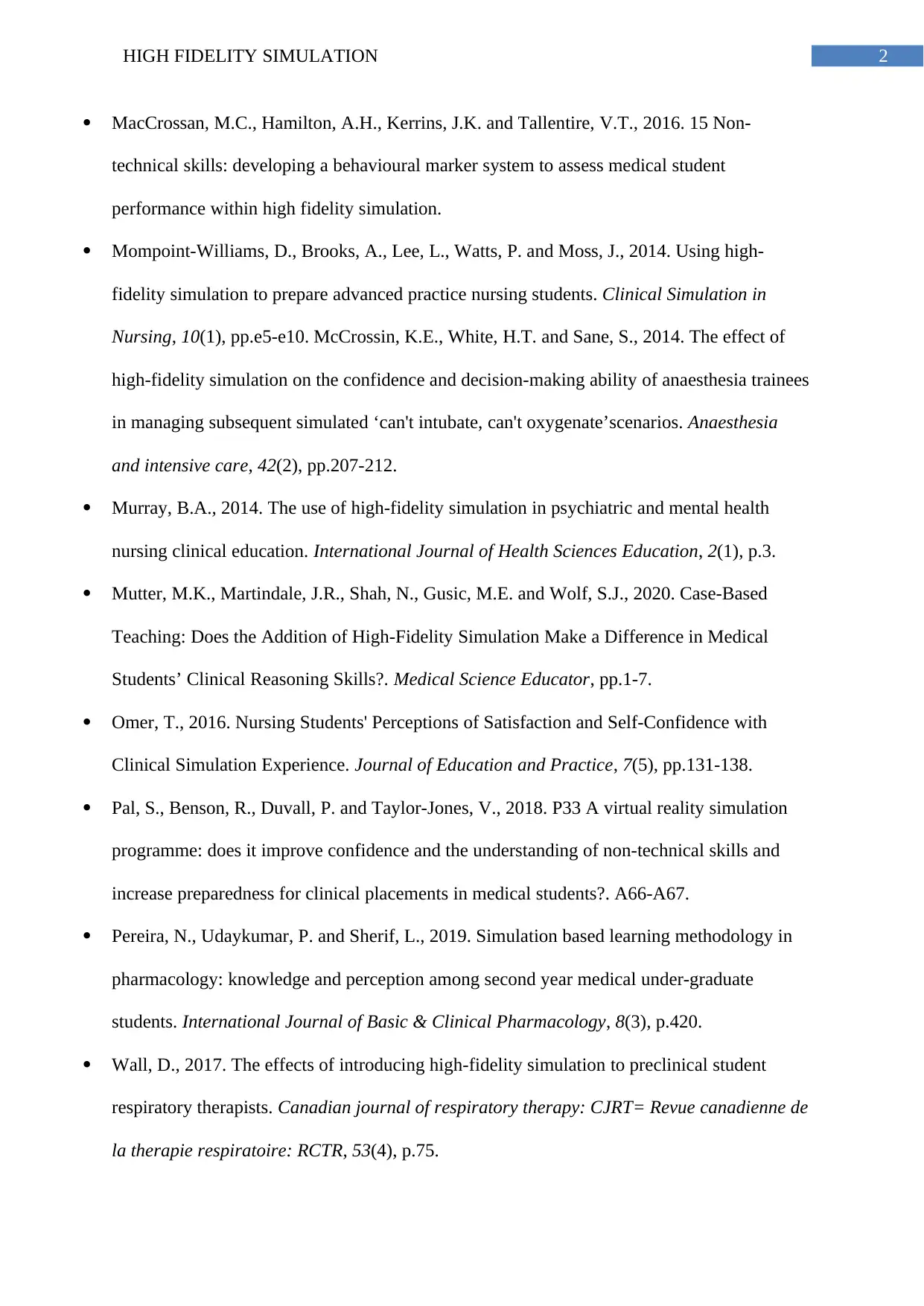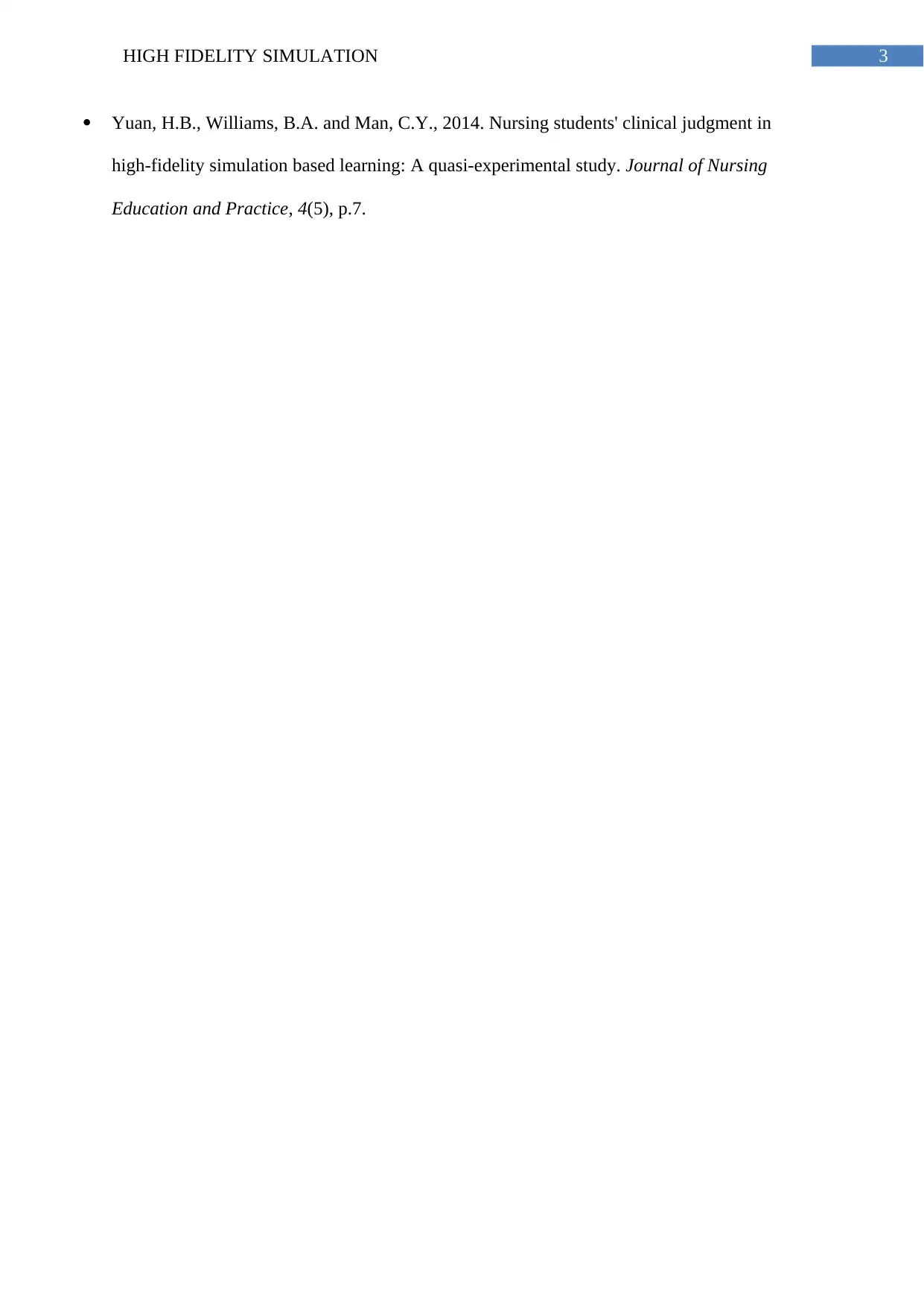Does High-Fidelity Simulation Improve Medical Student Decision Making?
VerifiedAdded on 2022/08/14
|4
|812
|14
Report
AI Summary
This report investigates the effectiveness of high-fidelity simulation in enhancing the decision-making and clinical management skills of medical students. It explores various studies and research findings, including the impact on knowledge acquisition, confidence levels, and the ability to handle critical care scenarios. The report examines how simulation-based learning can improve non-technical skills, clinical reasoning, and preparedness for real-world clinical placements. It references numerous studies that analyze the use of high-fidelity simulation in different areas of medical education, such as advanced life support, psychiatric nursing, and pharmacology. The report synthesizes the benefits of high-fidelity simulation, including improved student satisfaction and self-confidence, while highlighting its role in creating a safe environment for students to practice and refine their skills before entering clinical settings. The report concludes with an overview of how high-fidelity simulation can be integrated into medical curricula to improve overall student outcomes.
1 out of 4











![[object Object]](/_next/static/media/star-bottom.7253800d.svg)